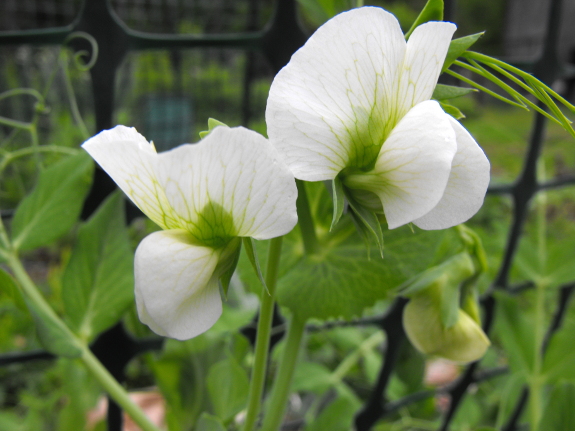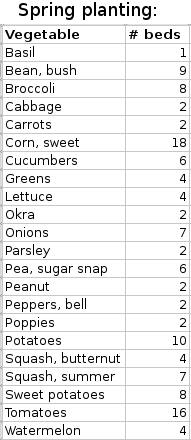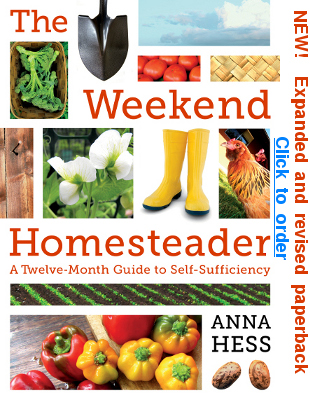
Simplifying complex rotations

The problem with a diverse
garden is that planning rotation can be a
mind-bending exercise if you grow in a large space. Luckily,
there are ways to simplify the process.
The first step toward
easy rotations is to figure out which
families
cover the most ground in your garden. These widespread families
will vary depending on what you like to eat, of course, but I always
struggle to find fresh ground for legumes, brassicas, cucurbits, the
onion family, and the tomato family. Everything else is pretty
easy since, for example, I just don't grow enough okra to make it
difficult to find the vegetable a home in next year's garden.
You could do worse than
to start off your rotation by deciding on
spots
for the members of the five prolific families mentioned above.
Make a list of all of the vegetables you grow in each family and divide
them up by planting date, then start finding homes for each crop from
earliest planted to latest planted. Don't worry if you're stumped
and can't find a good spot for the latest planted vegetables ---
openings
generally come up and let you squeeze the last few in.
The steps I use when
deciding on a spot for each vegetable in next year's garden are as
follows:
 1.
Decide how many beds to devote to the crop.
I keep notes on how much I preserve of each type of vegetable and of
the month when
I ran out of those stored foods in the winter. If I had to buy
tomatoes starting in February, that's a clue that I should plant more
beds next year. On the other hand, if I ended up with peppers
that I didn't want to eat when the time came to clean out the freezer
in the spring, I might as well grow fewer this year.
Don't get too carried away, though --- if this is your first or
second year gardening, you'll want to keep your garden small and
manageable.
1.
Decide how many beds to devote to the crop.
I keep notes on how much I preserve of each type of vegetable and of
the month when
I ran out of those stored foods in the winter. If I had to buy
tomatoes starting in February, that's a clue that I should plant more
beds next year. On the other hand, if I ended up with peppers
that I didn't want to eat when the time came to clean out the freezer
in the spring, I might as well grow fewer this year.
Don't get too carried away, though --- if this is your first or
second year gardening, you'll want to keep your garden small and
manageable.2. Consider where the crop will grow best. I like to save the sunniest spots for crops planted in the early spring or those which will survive late into the winter. The next sunniest spots go to tomatoes and cucurbits that succumb to fungal diseases during our hot, humid summers. Herbs can go anywhere, but you'll use more if they're close to your front door. Root crops require deep, well-drained soil, so keep them out of clayey or swampy spots. If you hand water, you might want to keep moisture lovers like celery close to the hose.
 3. Hunt and check until you find a
spot.
Now that I know I need 10 potato beds and that the root crop needs to
be located in the loamy third of my garden, I can start hunting through
the the garden until I find the appropriate number of beds that
haven't grown tomatoes, potatoes, peppers, or eggplants for a few
years. With a spreadsheet, you can simply search for the bed
number (or sort by bed if you have all of the information on the
same sheet) and get a list of all of the vegetables grown in each bed
since you started taking notes. Although a bit time-consuming,
this hunt and check method only takes me a couple of hours when
deciding on
spots for all of the crops in our huge spring and early summer garden.
3. Hunt and check until you find a
spot.
Now that I know I need 10 potato beds and that the root crop needs to
be located in the loamy third of my garden, I can start hunting through
the the garden until I find the appropriate number of beds that
haven't grown tomatoes, potatoes, peppers, or eggplants for a few
years. With a spreadsheet, you can simply search for the bed
number (or sort by bed if you have all of the information on the
same sheet) and get a list of all of the vegetables grown in each bed
since you started taking notes. Although a bit time-consuming,
this hunt and check method only takes me a couple of hours when
deciding on
spots for all of the crops in our huge spring and early summer garden.
If you need an incentive
to make garden planning happen in a timely
manner, you can use mine --- once I know where each vegetable will go,
I'm allowed to pore over seed catalogs. Garden porn!
I
hope you enjoyed this excerpt from Weekend
Homesteader: November. Check out the 99 cent ebook
for more information on how to store drinking water for use during
power outages, to put an entire
chicken to use in the kitchen, and to bring in cash without going to
the office.
| This post is part of our Garden Rotation lunchtime series.
Read all of the entries: |
Want more in-depth information? Browse through our books.
Or explore more posts by date or by subject.
About us: Anna Hess and Mark Hamilton spent over a decade living self-sufficiently in the mountains of Virginia before moving north to start over from scratch in the foothills of Ohio. They've experimented with permaculture, no-till gardening, trailersteading, home-based microbusinesses and much more, writing about their adventures in both blogs and books.
Want to be notified when new comments are posted on this page? Click on the RSS button after you add a comment to subscribe to the comment feed, or simply check the box beside "email replies to me" while writing your comment.

Good info as always. I have more beds of beans than anything else. Then comes various squash, then tomatoes.
Each year I try to meet more of my family's needs. I don't try to increase everything, that would just make it possible to fail. This year we likely have all our beans for the year, but some of them were purchased from a farmer. So next year instead of having 12 beds of beans, I'll boost it to 20. That seems like a lot, but there are at least 2 seasons of beans each year.
Do you do companion plantings as well? Are your onions mixed in with everything to help keep away pests?